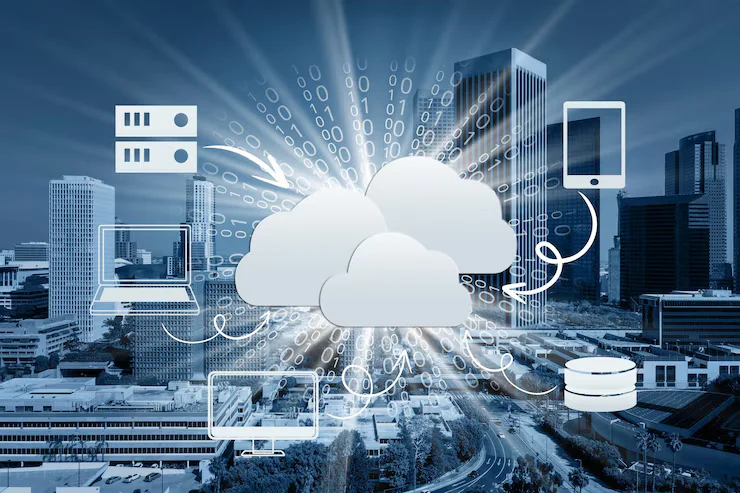Being a business owner, you are likely to face a dilemma about whether to shift to cloud computing. More often, business owners think that opting for cloud computing will be an expensive affair, but the reality is somewhat different.
The truth is that cloud computing can be both cost-effective and affordable when managed properly. It offers flexibility in scaling, for which there is no need for hefty upfront investments in hardware and maintenance. You need to only pay for what you use. With the right strategies, such as selecting the appropriate service model and optimizing resource usage, you can significantly reduce costs. Cloud engineering services can guide you in implementing these strategies effectively to ensure that your business can leverage the cloud without overspending.
This blog explores the above aspect in detail while separating the cloud pricing myths from reality.
Key Factors Influencing Cloud Costs
Various factors directly impact how much you will pay for cloud services. So, what are these factors? Let’s have a look:
- Service Model: The cloud offers three different service models: IaaS (Infrastructure as a Service), PaaS (Platform as a Service), and SaaS (Software as a Service). Each has its own cloud pricing model. For instance, IaaS gives you more control but may cost more if not optimized. PaaS and SaaS are generally more affordable but offer fewer customization options.
- Usage Patterns: As mentioned earlier, cloud services are usually billed based on how much you use. If you need more storage, computing power, or bandwidth, naturally, the costs will be higher and vice versa. This is especially helpful when your business is experiencing fluctuating demand, such as seasonal spikes. However, overuse or underutilization of resources can lead to unexpected costs, so it’s essential to monitor usage regularly.
- Geographic Location: Cloud providers have data centers around the world, and the cost can vary depending on the region. Hosting your services in a data center closer to your customers may improve performance and reduce latency, but it could come at a higher cost.
- Data Security and Compliance Needs: If your business operates in a regulated industry or handles sensitive data, ensuring compliance with data protection laws (like GDPR) can add to your cloud computing expenses. Enhanced security features, such as encryption and dedicated firewalls, often come with additional fees.
Common Myths About Cloud Computing Costs
Let’s break down some of the most common myths about cloud costs that might be holding you back:
Myth 1: Cloud is Always Expensive
You might think that cloud computing is out of your budget, but this isn’t necessarily true. The beauty of the cloud lies in its flexibility. If your business doesn’t need heavy computing power every day, you’re not stuck paying for unused capacity. You can scale your usage up or down based on demand. Whatever the cloud service model (IaaS, PaaS, or SaaS) you choose, you can save more money compared to the hefty upfront costs of building and maintaining your own server infrastructure.
Myth 2: Cloud Costs Are Unpredictable
Another myth is that cloud costs are hard to predict, making it difficult to plan. While it’s true that costs can vary, cloud providers offer tools to monitor and manage your spending. For example, cloud platforms like AWS, Azure, and Google Cloud provide calculators and dashboards to help you estimate and track costs in real time. By carefully managing your usage, you can avoid unexpected surprises.
Myth 3: You Can’t Control Cloud Costs
Most business owners believe they have no control over cloud costs once they switch. However, this isn’t true. With cloud cost management strategies such as auto-scaling, choosing reserved instances, and utilizing serverless technologies, you can keep costs under control. Additionally, by regularly reviewing your usage and optimizing resources, you can ensure that you’re only paying for what you truly need.
Comparing Cloud Computing Costs to Traditional Infrastructure
Before going with cloud computing, it’s important to compare cloud costs with a traditional infrastructure setup. This approach will make you realize that choosing the cloud over the other is absolutely worth it:
1. Initial Setup Costs: Cloud vs. Traditional Infrastructure
The first thing to consider is the initial setup cost. When you go for a traditional IT infrastructure, there’s a heavy upfront investment. You’re looking at buying physical servers, networking equipment, and storage devices, and paying for the space to house all these elements. That’s a lot of capital out of your pocket before you’ve even started using the system. Additionally, there are installation, configuration, and labor costs of setting everything up.
On the other hand, cloud computing doesn’t require this heavy upfront investment. With cloud services like AWS, Azure, or Google Cloud, you can start small. You’re basically renting the resources you need, and you don’t have to worry about the costs of hardware or the logistics of maintaining it. So, if your business is small, cloud computing can be an affordable option to scale up as needed without large capital expenses.
2. Ongoing Maintenance and Operational Costs
With traditional infrastructure, you need a team to maintain the servers, install security patches, manage backups, and ensure everything is running smoothly. Not to mention, physical servers require a safe, controlled environment, meaning costs for cooling, electricity, and real estate. You’ll also need to plan for eventual hardware replacements, which can be costly and time-consuming.
With cloud computing, much of this maintenance is handled by the provider. The cloud provider takes care of the servers, networking, and storage, including updates, security, and backups. This reduces the burden on your IT team and the need to hire more staff. The cloud is built for scalability, so you don’t have to worry about physical space or power requirements.
3. Scalability: Only Pay for What You Need
In the traditional setup, scaling up means buying more hardware, installing it, and configuring it to meet growing demand. This can be expensive, and in many instances, you might over-provision, meaning you pay for more resources than you actually need.
With the cloud, scaling is much easier and more cost-effective. Whether you need more storage, extra computing power, or even an entirely new service, you can get it without any hassle. When business slows down, you can scale down and reduce costs. This flexibility allows businesses to avoid the risk of overpaying for resources they don’t use.
4. Long-Term Cost Efficiency: The Hidden Advantage of Cloud
With traditional infrastructure, you’re locked into managing and maintaining your hardware for several years. Over time, these systems can become outdated, requiring costly upgrades or replacements. You also face the risk of hardware failures, which could lead to unexpected downtime and repair expenses.
By choosing the cloud, you don’t have to deal with these worries. Plus, cloud providers typically offer better energy efficiency than traditional data centers, which could mean lower utility bills for your business. Moreover, cloud computing’s subscription-based model allows you to shift costs from capital expenditure (CapEx) to operational expenditure (OpEx). This is beneficial for businesses that don’t have huge upfront capital to invest in infrastructure.
5. The Human Element: Saving Time and Effort
When it comes to traditional infrastructure, your team spends a lot of time managing systems, troubleshooting problems, and maintaining equipment. This takes away valuable time that could be better spent on core business activities.
In contrast, with cloud computing, you get reliable support from your cloud provider, freeing up your team to focus on what really matters.
Related insight: This article dives even deeper into the topic.
Cloud Computing Costs vs Traditional Infrastructure Costs: A Quick Look
| Aspect | Traditional Infrastructure | Cloud Computing |
| Initial Setup Costs | High upfront capital expenditure (servers, hardware, space) | Low upfront costs (pay-as-you-go model, no hardware needed) |
| Ongoing Maintenance Costs | Ongoing costs for staff, hardware maintenance, power, cooling, and updates | Maintenance handled by the cloud provider (security, updates, backups) |
| Scalability | Scaling requires purchasing and installing new hardware | Easy to scale up or down as needed (pay only for what you use) |
| Long-Term Costs | Long-term hardware replacement, energy costs, and staff expenses | No need for hardware replacement, efficient energy use, and lower operational costs |
| Time and Effort for Management | Requires in-house IT staff to manage, monitor, and troubleshoot systems | Minimal management required, as the cloud provider handles most tasks |
Cloud Cost Optimization: Practices to Follow
With the right strategies, you can make cloud computing even more cost-effective and scale your business efficiently:
- Leverage Auto Scaling: Cloud providers offer auto-scaling features that adjust your resources based on actual usage. For example, if your business experiences a spike in traffic, your cloud resources can automatically scale up to meet the demand. When the traffic drops, it scales back down, ensuring you’re not wasting money on idle resources.
- Use Reserved Instances or Savings Plans: Cloud services often offer discounted pricing if you commit to using their infrastructure for a longer term. With reserved instances or savings plans, you can save up to 70% compared to pay-as-you-go pricing. If your business needs steady cloud resources, these options can be a great way to curb cloud computing expenses.
- Regularly Monitor Your Usage: Tools like AWS Cost Explorer or Google Cloud Platform’s Billing Console allow you to track your spending and identify any wasteful practices. Setting up usage alerts will help you stay on top of unexpected costs before they spiral out of control.
- Optimize Your Storage: Keep in mind that storing data in the cloud can become expensive if not managed properly. Archive older, infrequently accessed data in cheaper storage options. Most cloud providers offer tiered storage, allowing you to save costs on data that doesn’t require instant access.
- Shift to Serverless Solutions: For businesses with fluctuating workloads, serverless computing (e.g., AWS Lambda or Azure Functions) can reduce costs by only charging for the actual compute time you use.
Conclusion
Making the switch to cloud computing can seem daunting, especially when you’re concerned about costs. However, it’s important to remember that cloud computing offers flexibility and scalability that traditional setups can’t match. With the right planning, you can manage your cloud expenses effectively and even lower them over time. By understanding your business’s needs and utilizing tools for cost optimization, the cloud can become an affordable solution that grows with you.
If you enjoyed this post, you’ll love what’s featured on Management Works Media.






